🚧 mobile view under construction 🚧
👩💻 Projects (click on a card to learn more)
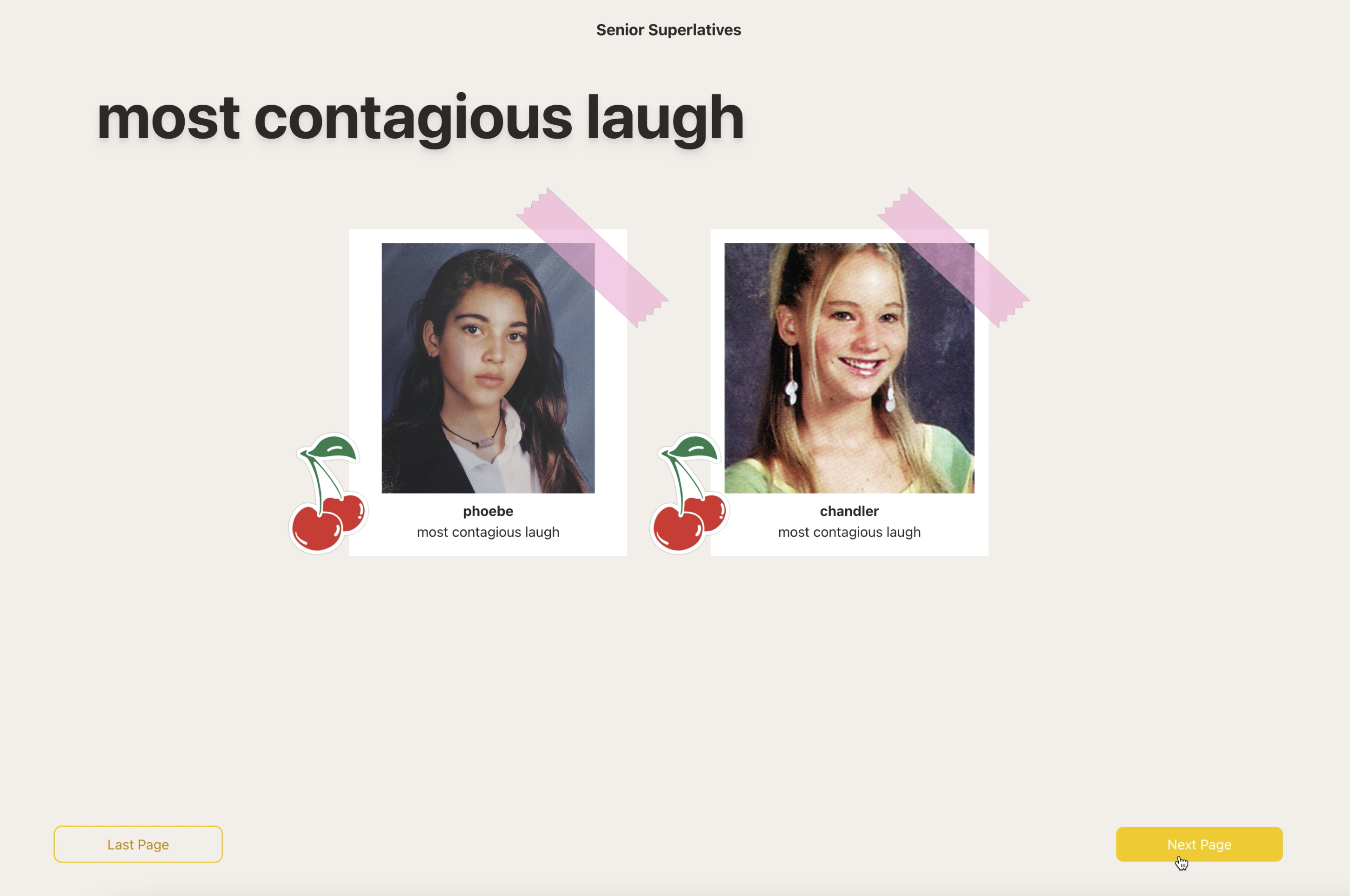
Senior Superlatives
About
This project is far from complete, but I wanted to make an easier and more fun way for friends to share superlative voting forms with each other and also display the results like you would see in a yearbook. I built this project this past week during winter break so that I could learn how to use Firebase realtime databases and deployment.
🛠️ Technologies
Firebase
Databases
React
🌐 Website
https://seniorsuperlatives-6b973.web.app/🤖 Github
private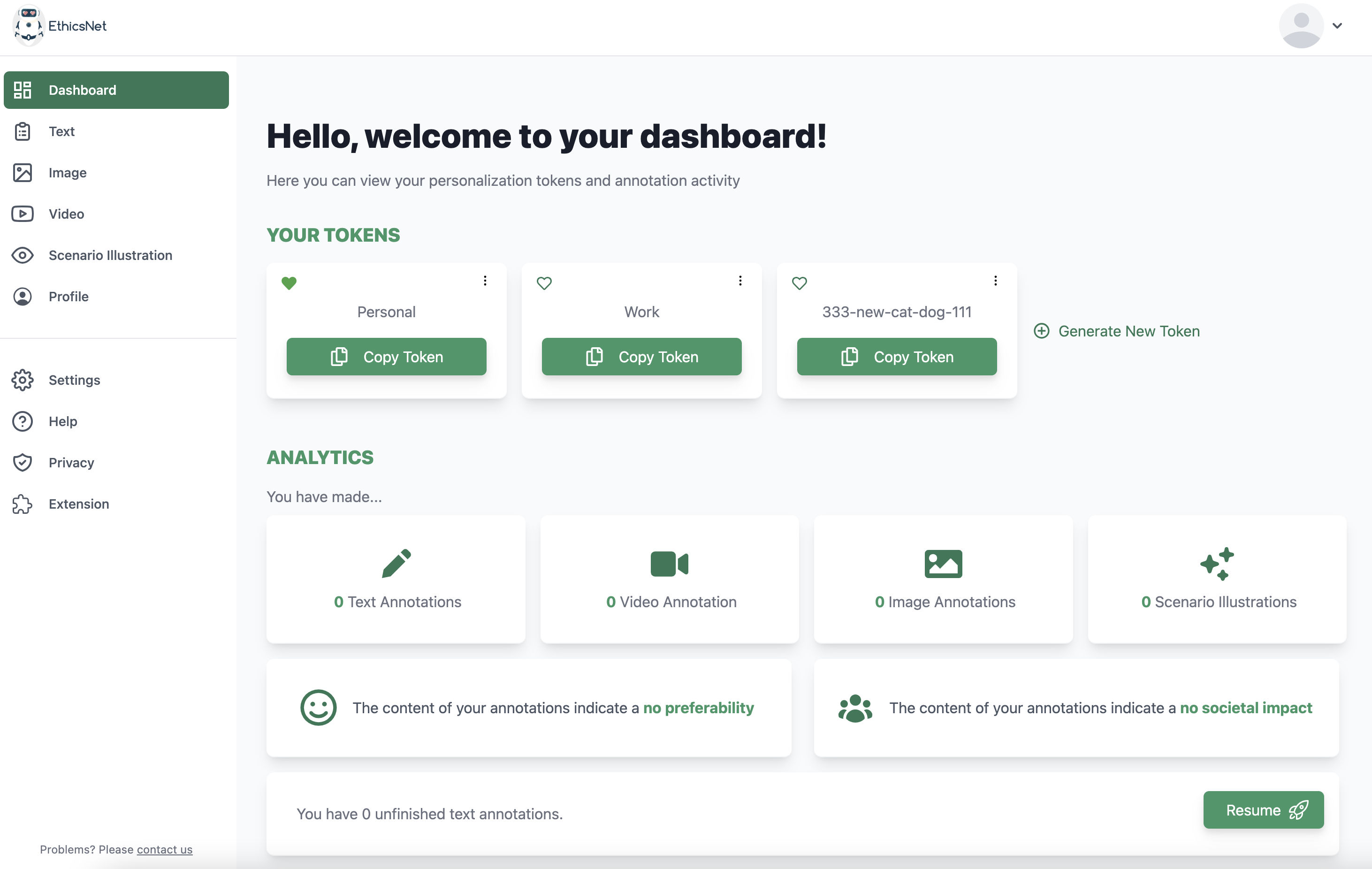
EthicsNet
About
As a product manager for Hack4Impact this semester, my amazing team of 7 and I worked with the nonprofit, EthicsNet, to develop a way for people to input their personal values into a personalized AI token to share with models like ChatGPT and Dall-E. The project's scope included the token generation and re-design of the annotation suite. Besides getting to work with the client and our designer, Kalyn, to scope out the project and conduct user research, some features that I coded were user dashboard where users could access their tokens and see their annotation analytics.
🛠️ Technologies
React
TypeScript
Product
🌐 Website
https://www.ethicsnet.org/🤖 Github
private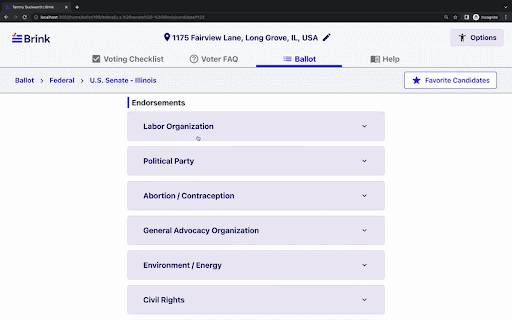
Brink
About
As a software developer for Hack4Impact this year, my team and I got to work with the nonprofit, Brink, to develop an accessible voting website. Some features that I built were a candidate's endorsements accordion, the voting guidelines page, the polling places page, and more. This coming semester I will be working a product manager and lead at Hack4Impact.
🛠️ Technologies
React
TypeScript
Product
🌐 Website
https://web.brinkapp.co/landing🤖 Github
https://github.com/stephen-puiszis/brink-web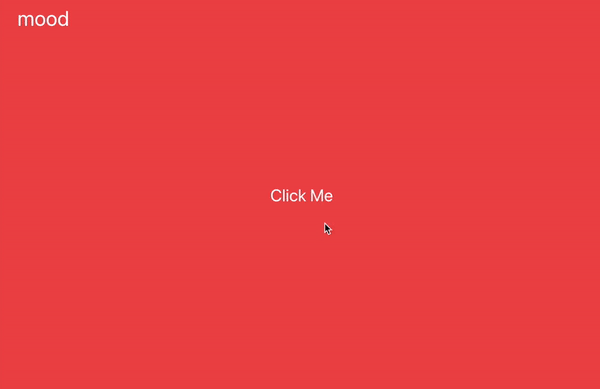
Mood
About
Mood is a passion project that my friend (shoutout to Tao :D) and I built this summer that takes in a user's speech input and generates a mood based on the user's phrase using natural language processing and then generates a mood-specific Spotify playlist for the user. For example, in this picture, I said 'I'm really happy that you're visiting my website today!' The sentiment generated was 0.86 (on a 0 to 1 scale) and generated this playlist: shorturl.at/qvB59 Check out the playlist if you want! For this project, we used Python, Next.js, and Flask for the backend and React, Figma, and Tailwind for the frontend.
🛠️ Technologies
React
Tailwind
NLP
Backend
🌐 Website
shorturl.at/qvB59🤖 Github
https://github.com/ts549/Spotifind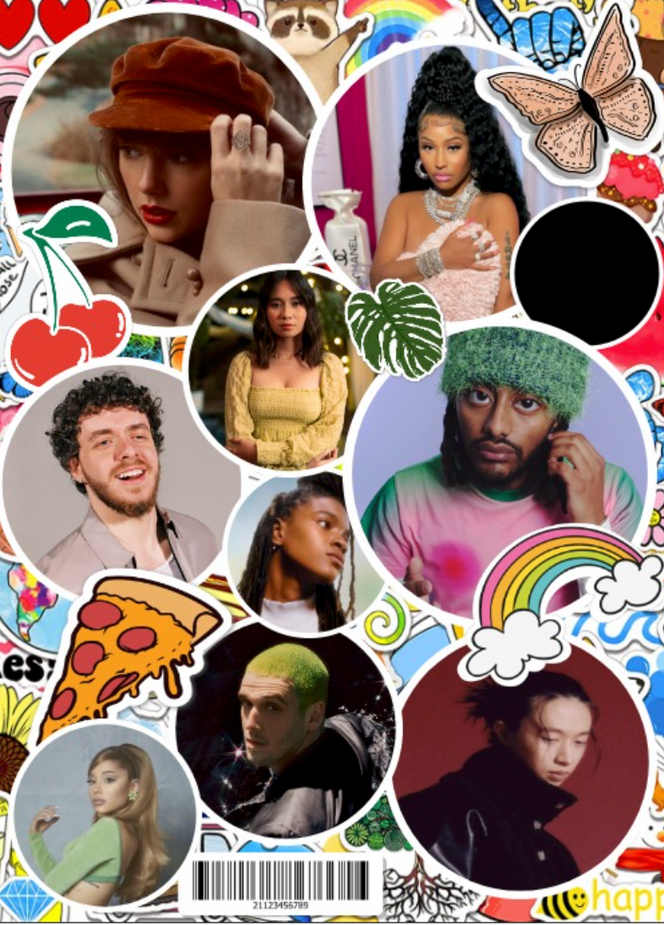
Sp-art-ify
About
Our project, Sp-ART-ify, is a web app that allows Spotify users to visualize their favorite artists, albums, and songs. In our app, users can log in with their Spotify account to have custom images generated of their listening habits in an eye-catching and easily shareable format. On this computer generated image, you can see some of my favorite artists like Taylor Swift, Niki, Amine, and Jack Harlow. We used React and the Spotify API to build this project. I was responsible for building out the backend, http requests, managing the spotify API, and connecting the frontend to the backend. Check out our Github below or our slideshow to learn more!
🛠️ Technologies
React
Backend
🌐 Website
shorturl.at/loyC5🤖 Github
https://github.com/CS222SP22/course-project-mp-b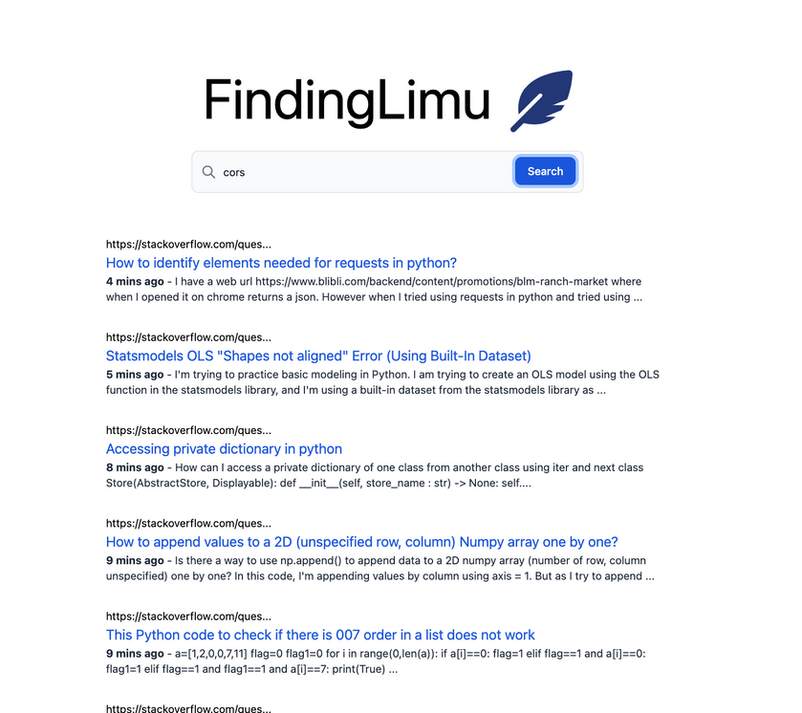
Liberty Mutual Webscraper
About
An issue that I faced as a software developer at Liberty Mutual Insurance this summer was that there were too many different platforms to search up answers to technical questions I had (i.e. Slack, Stackoverflow, internal Liberty Mutual Websites, etc.). For the Liberty Mutual Intern hackathon and my team's Innovation Sprint, I built out a webscraper tool that accumulate web searches into 1 search engine. In this picture, you can see me searching up 'cors' to help solve my issue of connect data from the backend and frontend. I built the backend API server using Express and NextJS framework and hosted the site on Vercel.
🛠️ Technologies
React
Next.js
Tailwind
Backend
🌐 Website
https://github.com/szhuang21/FindingLimuLM🤖 Github
https://github.com/szhuang21/FindingLimuLM
Machine Learning Research
About
Built feed forward neural networks to predict surface roughness of alloying materials with Dr. Wing Kam Liu at Northwestern University with the GCAMS lab
🛠️ Technologies
Machine Learning
Research
🌐 Website
https://rb.gy/ozsxgb🤖 Github
https://rb.gy/osxooz